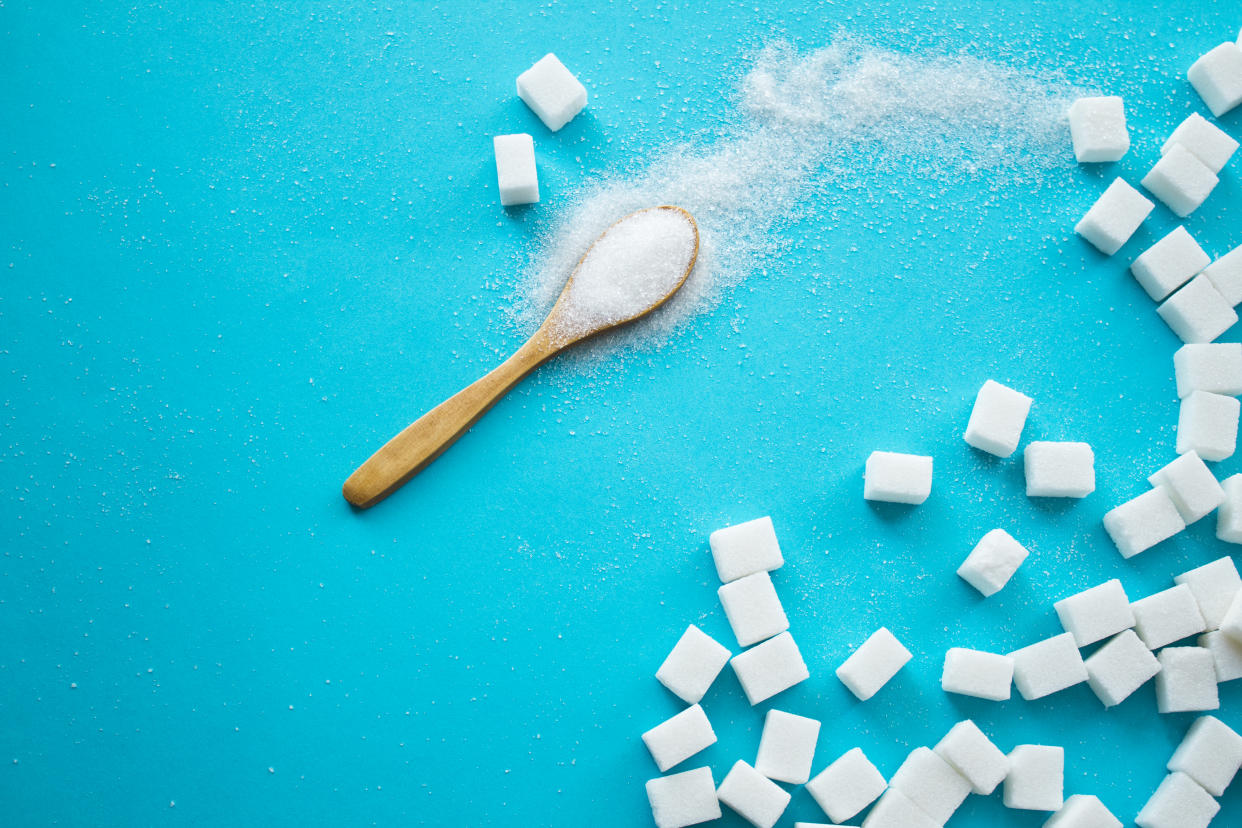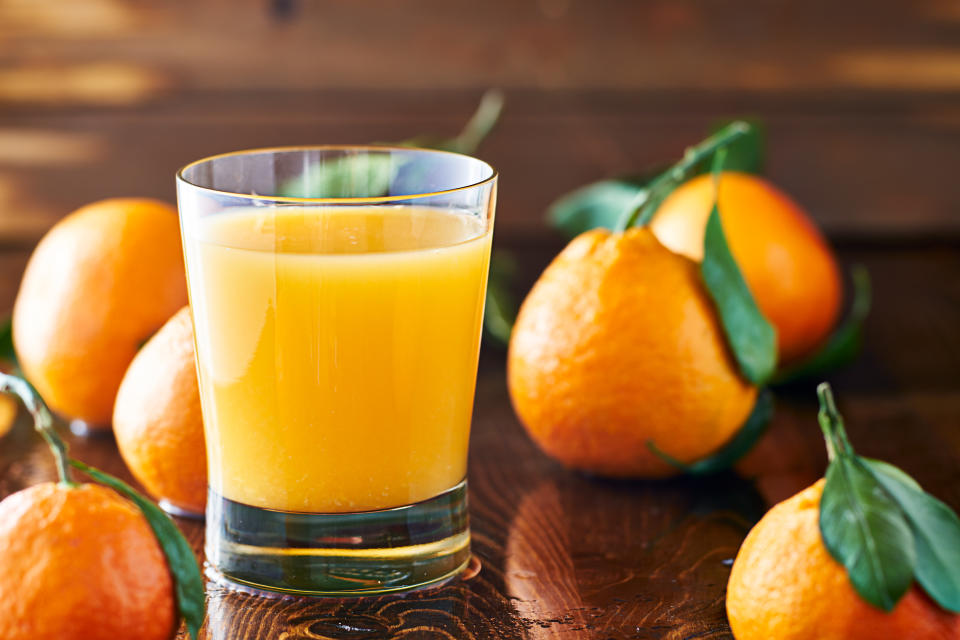10 surprising foods full of hidden sugar

Eating too much sugar leaves us vulnerable to tooth decay, obesity and type 2 diabetes.
Most know chocolate, biscuits and fizzy drinks are loaded with the sweet stuff.
But, you may not realise sugar lurks in countless products on supermarket shelves.
From savoury pasta sauces to “healthy” granola, hidden sugar could be tipping you over the daily recommended limit.
READ MORE: Dentists urge schools to go sugar-free to tackle tooth decay
The UK government recommends adults consume no more than 30g of “free sugar” a day, roughly seven sugar cubes.
Free sugar is added to food and drinks, and found naturally in honey, maple syrup and juice.
Fruit, vegetables and dairy also contain sugar but can be eaten guilt-free.
READ MORE: What Happens to Your Body When You Give Up All Sugar
Children aged seven-to-10 should have no more than 24g - six cubes - of sugar a day, according to the NHS.
Those between four and six can have 19g - five cubes - and youngsters under four should abstain completely.
While it all sounds simple, many may be exceeding these guidelines without realising.
“Free sugars are notoriously hidden in many processed foods such as condiments, ready-made sauces, yoghurts and breakfast cereals,” Rob Hobson, registered nutritionist and head of nutrition at Healthspan, told Yahoo UK.
10 surprising sources of sugar
Granola
With a blend of nuts and seeds, many may mistakenly believe granola is a healthy start to the day. But, the go-to breakfast can contain up to 6g of sugar per 40g serving.
“Look out for honey, syrup and cane sugar, which contribute to the free-sugar content of this food product,” Mr Hobson said.
“If you’re looking for one that contains less sugar, choose ‘no added sugar’ varieties, which simply contain oats, nuts, seeds and dried fruit.”
Heinz Tomato Ketchup
Many refuse to eat chips without it, but the cupboard staple contains 3.4g of cane sugar per 15g serving.
“Ketchup adds little in the way of nutrients and usually comes with unnecessary salt, as well as sugar, so it’s best to enjoy it sparingly, if at all,” dietitian Juliette Kellow told Yahoo UK.
Thankfully, Heinz has released a ‘no added sugar’ alternative to the classic. With just 0.7g of sugar per serving, the sweet stuff comes naturally from tomatoes, with a dash of the sweetener sucralose.
Sweeteners have proved controversial over the years, with some even claiming they cause cancer.
Cancer Research UK dismisses these concerns, declaring sweeteners as “safe for humans”, the NHS reports. Unlike sugar, they do not cause our blood sugar levels to spike or trigger tooth decay.
Those who are still concerned could make their own condiments.
“For healthier sugar-free flavourings, add pepper, citrus juice and zest, garlic, herbs, and spices to meals when you’re cooking,” Ms Kellow said.
Orange juice
Once considered a healthy start to the day, juice - even if pure fruit - contains around 12.2g of sugar per 150ml.
“All the sugars in orange juice are attributed to the juices released by breaking down the original fruit,” Mr Hobson said.
When drank in moderation, however, the pros could outweigh the cons. “As one of your five-a-day, fruit juice is still healthy, and provides a source of vitamin C and folate,” Mr Hobson said.
Vitamin C keeps our immune system healthy, while also aiding iron absorption, promoting healthy skin and combating fatigue.
“Fortified varieties also offer additional micronutrients used by the body to support good health,” Mr Hobson said.
A small glass of orange juice will unlikely do any harm, but you may want to take precautions if you have more than 150ml.
“If you like a big glass of juice, mix 150ml with water – still or sparkling – or plenty of ice,” Ms Kellow said.

Pasta sauce
Pre-made tomato sauce can have added sugar, while others contain that which is released when the fruit is broken down.
“The only way you can tell this is to look at the ingredients list,” Ms Kellow said. “The higher sugar appears, the more the product contains.
“Do bear in mind though if sugar is the fourth ingredient, it doesn’t automatically mean the product is packed with sugar.
“Look at the percentage of other products listed in the ingredients, too. If a pasta sauce contains 95% tomatoes, that only leaves 5% of the product for the many other ingredients, of which sugar may just be one.”
Tomato sauce can count towards our five-a-day and tends to be much lower in fat than creamy alternatives.
“You can whip up a simple tomato sauce yourself from scratch but the whole idea of buying one is to save time,” Mr Hobson said. “Check the front of pack labelling as it is likely to represent the true figure for free sugars in the product.”
Dried fruit
Just like fresh fruit, raisins, prunes and dried apricots can be a nutritious snack.
Removing the water ups the sugar content, with apricots containing around 17.4g per 40g serving.
And dried, tart fruit, like cranberries or cherries, almost always has added sugar.
“The natural sugars in dried fruit are very concentrated, so can potentially be more damaging to teeth than fresh fruit,” Ms Kellow said.
“This means it’s best to eat dried fruit as part of a meal rather than as a snack alone. This helps stimulate more saliva, which in turn helps to wash away food from the teeth.”
Heinz Baked Beans
Whether dolloped on top of a baked potato or a hangover cure on toast, Heinz baked beans contain 4.7g of sugar per 100g serving.
“All of the sweetness in this product comes from the addition of cane sugar and the resultant sugar from the breakdown of the tomatoes used to make the sauce,” Mr Hobson said.
A no-added sugar version has 1.9g of the sweet stuff, which again comes from the tomatoes in the sauce and a little of the natural alternative stevia.
But, fans of the original needn’t despair.
“Don’t automatically dismiss baked beans based on their sugar content,” Ms Kellow said. “One small pot or half a large tin of baked beans actually counts as one of your five-a-day.
“Baked beans are also low in fat, and high in plant protein and fibre, the latter two of which can help keep us fuller for longer.
Honey
Many fall into the trap of thinking anything natural is healthy.
While honey contains nutrients like magnesium, iron and zinc, all its sugar is “free”.
“There is no way around here if this is your choice of sweetener,” Mr Hobson said.
Although natural, honey will cause your blood sugar levels to spike and crash in the same way as cane sugar, with around 11.5g per tablespoon.
“Just like the white stuff, honey counts as a free sugar and should be limited,” Ms Kellow said.

Flavoured yoghurt
Often considered a healthy treat for children, strawberry, banana or vanilla yoghurts can have 20g of sugar per 125g.
“A healthier option may be to choose plain natural yoghurt and top with nuts, seeds, fresh fruit and even just a teaspoon of honey, which would reduce the ‘free’ sugar content by as much as 75%,” Mr Hobson said.
If you prefer the shop-bought varieties, enjoying them in moderation could do you - or your children - the world of good.
“Whilst it’s good to be sugar savvy, don’t automatically let the sugar content put you or your children off enjoying yogurt,” Ms Kellow said.
“It contains muscle-strengthening protein, bone-building calcium and phosphorus, and iodine for normal thyroid function.
“And with around 100 calories and less than 3g fat per 125g pot of low-fat fruit yogurt, they often provide a lower calorie and fat option to other desserts.”
White wine
Red wine is low in sugar, but a sweet white tipple can contain 3g of the sweet stuff per 125g, which comes from grapes.
“The amount in a single glass may not seem too much, but many drink more than one glass in a single sitting and binge drinking can send sugar intakes through the roof,” Mr Hobson said.
Wine fans can still enjoy drier varieties, which have less of the sweet stuff.
“To keep the sugar down you should mix with soda water and fresh lime juice or a sugar-free mixer,” Mr Hobson said.
“Other alcoholic drinks such as vodka contain no free sugars, which may make them a better choice if you’re watching your intake.”
Sweet chilli sauce
A must for a stir fry or just dunking a spring roll, sweet chilli sauce can have 6.5g sugar per tablespoon.
“The sugars in this are normally sourced from cane sugar and high-fructose corn syrup,” Mr Hobson said.
“You can find lower-sugar varieties of this sauce, which contain around a third less sugar.
“If you’re using it as a dipping sauce, you could reduce the sugar even more by exploring recipes that combine it with vinegar, and other ingredients such as spring onions, ginger, garlic and coriander.”
How to spot - and avoid - hidden sugars
While you may be surprised to learn sugar is lurking in many of your everyday foods, there are easy ways to reduce your intake.
“One is to eat fewer processed foods and instead cook more meals from scratch,” Ms Kellow said. “But with today’s busy lifestyles, this isn’t always easy or practical.
“If you purchase pre-packed food and drinks, learning how to read labels is a great first step towards making healthier choices.”
Anything with 5g or less of sugar per 100g is considered “low sugar”.
This is handily shown with a green traffic light label on the packaging. More than 22.5g per 100g is “high” sugar and has a red “light”.
While opting for low-sugar alternatives to the original can be useful, it does not guarantee a small serving of the sweet stuff.
“By law if a product is described as ‘reduced-sugar’ it must contain at least 30% less than a similar product; although bear in mind this doesn’t mean it’s low in sugar,” Ms Kellow said.
When checking a food’s label, know the ingredients to look out for.
“Free sugars come in many different guises, but as a rule of thumb look for anything that ends in ‘ose’ (sucrose, glucose, fructose),” Mr Hobson said.
“As well as any healthier-sounding alternatives, such as raw sugar, barley malt, maple syrup, coconut nectar, palm sugar, agave nectar, date sugar and brown rice syrup.
“Ingredients lists are assembled in descending order so you can immediately tell if a food product is high in free sugars if one of these ingredients appears at the top of the list.”
While it may sound daunting, Mr Hobson stresses we should allow ourselves to indulge guilt-free every now and again.
“The age-old message rings true that the healthiest way to approach your diet is about achieving balance,” he said.
“The overconsumption of free sugars can never be defended but it’s unrealistic to think now and again we may not overindulge.”


